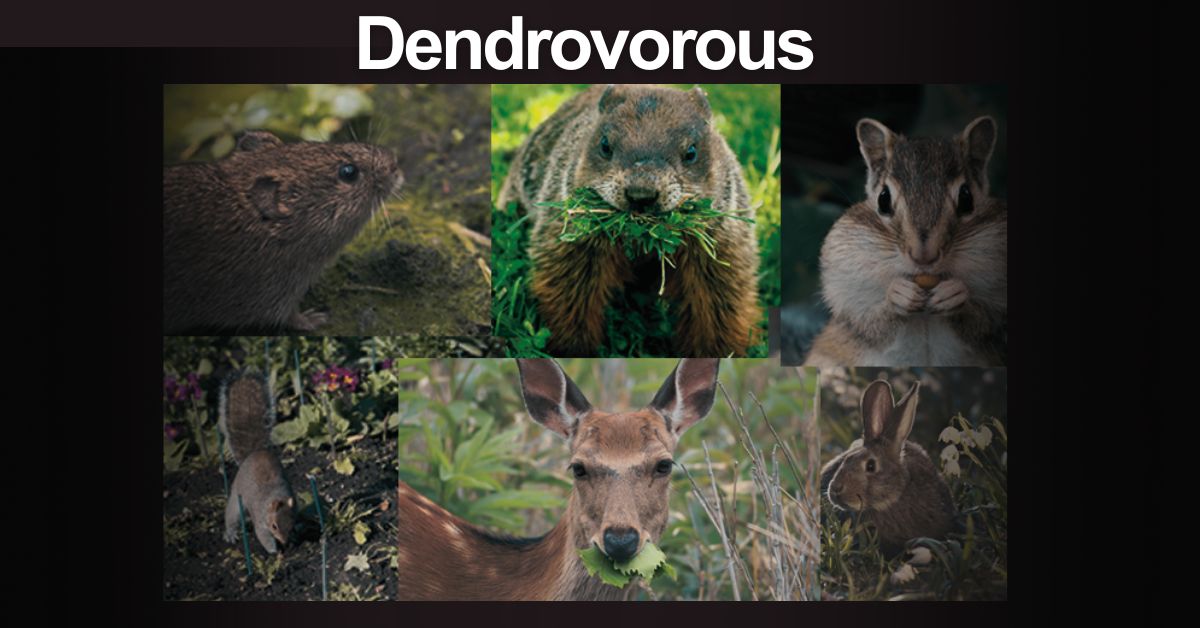Dendrovorous – The Secrets Of Tree-Eating Creatures!
Watching birds like woodpeckers pecking at trees for food made me realize how amazing Dendrovorous creatures are. Seeing them in action showed me how important these animals are for trees and the whole forest. It made me appreciate nature even more.
Dendrovorous means animals that eat trees. These creatures, like insects or birds, rely on trees for food and shelter. Understanding dendrovorous animals helps us see how they fit into the ecosystem. They play a vital role in maintaining the balance of nature.
In this article, we talk about the fascinating world of dendrovorous organisms. Exploring creatures that feed on trees, we uncover their importance in forest ecosystems. Join us as we delve into the wonders of dendrology and its impact on nature.
Contents
- What Is Dendrovorous? – Let’s Find Out!
- When Do Dendrovorous Organisms Feed? – Explore It!
- Why Do Organisms Become Dendrovorous? – Discover Nature’s Secrets!
- How Do Dendrovorous Organisms Feed? – So Interesting!
- Examples Of Dendrovorous Organisms – Explore Nature’s Wonders!
- Impact Of Dendrovorous Behavior – Conserve Trees, Save Nature!
- Frequently Asked Questions:
- Ending Thought:
- Latest Post:
What Is Dendrovorous? – Let’s Find Out!
Dendrovorous means animals that eat trees. These creatures, like insects, birds, or even mammals, depend on trees for food and sometimes their homes. They have special adaptations that help them get nutrients from trees, like strong beaks or sharp teeth. Dendrovorous animals play an important role in forests because they help control insect populations and spread seeds, which helps new trees grow. Understanding dendrovorous animals helps us appreciate how different species work together to keep ecosystems healthy and balanced.
Interesting Fact: Dana Speaks At Http://Www.Coloradofreemasons.Org/
When Do Dendrovorous Organisms Feed? – Explore It!
Dendrovorous organisms, creatures that eat trees, have specific times when they feed. Here are the details in points:
- Seasonal Patterns: Some dendrovorous organisms have feeding patterns that coincide with the seasons. They may be more active during certain times of the year when tree resources are more abundant or accessible.
- Day and Night: While some dendrovorous organisms feed during the day when it’s bright and sunny, others are more active at night, taking advantage of the cover of darkness to avoid predators and gather food.
- Life Cycle Stages: The feeding habits of dendrovorous organisms can also vary depending on their life cycle stages. For example, larvae of certain insects may feed more voraciously during their growth stages, while adult birds may feed to sustain themselves and their young.
- Weather Conditions: Weather plays a significant role in when dendrovorous organisms feed. Rainfall, temperature, and humidity can affect the availability of food sources such as insects, fruits, or sap, influencing the feeding behaviors of these creatures.
- Tree Phenology: Dendrovorous organisms may synchronize their feeding activities with tree phenology, which refers to the seasonal cycles of tree growth, flowering, and fruiting. They may focus their feeding efforts when trees are producing new leaves, flowers, or fruits.
- Competition and Predation: Competition for food and the presence of predators can also influence when dendrovorous organisms feed. Some may adjust their feeding times to minimize conflicts with other species or to avoid becoming prey themselves.
Understanding the timing of dendrovorous feeding behaviors provides insights into the ecological dynamics of forests and helps researchers and conservationists develop strategies for preserving these vital ecosystems.
Recent Post: Everything About: http://peliplushd.ph/
Why Do Organisms Become Dendrovorous? – Discover Nature’s Secrets!
Organisms become Dendrovorous, meaning they eat trees, for several important reasons:
Resource Availability:
Trees offer a rich source of nutrients, including carbohydrates, proteins, and minerals. Dendrovorous organisms have evolved to exploit these resources, finding food and shelter within the forest canopy.
Specialized Adaptations:
Over time, some organisms have developed specialized adaptations that allow them to consume tree matter efficiently. For example, woodpeckers have strong beaks for drilling into bark to reach insects, while insects have developed mouthparts for chewing through wood.
Habitat Requirements:
Many dendrovorous organisms rely on trees for food and habitat. By becoming dendrovorous, these animals can find shelter, nesting sites, and protection from predators among the branches and trunks of trees.
Ecological Niche:
Becoming dendrovorous allows organisms to occupy a specific ecological niche within the forest ecosystem. By specializing in consuming tree matter, these organisms reduce competition with other species and can thrive in their unique habitat.
Evolutionary Advantage:
Dendrovory can give organisms an evolutionary advantage, allowing them to access otherwise untapped food resources. This specialization can increase their chances of survival and reproductive success in their forest environment.
Overall, organisms become dendrovorous due to a combination of ecological, evolutionary, and survival pressures, highlighting the complex interactions between organisms and their environment within forest ecosystems.
Do You Know? 888-357-1407 – The Robocall Mystery!
How Do Dendrovorous Organisms Feed? – So Interesting!
Dendrovorous organisms, which eat trees, have various feeding strategies adapted to their specific needs and habitats:
- Chewing and Boring: Insects like beetles and caterpillars often chew through leaves, bark, or wood to access nutrients. Some insects, such as wood borers, bore into tree trunks to feed on the inner layers.
- Pecking and Drilling: Birds like woodpeckers use their strong beaks to peck at tree bark, uncovering insects hiding beneath. They may also drill into wood to reach insect larvae or sap.
- Sucking and Sipping: Certain insects and birds have specialized mouthparts for sucking sap from trees. They puncture the bark or leaves to access the sugary fluids, providing them with a nutrient-rich meal.
- Grazing and Scraping: Some dendrovorous organisms, such as certain mammals like squirrels, graze on tree foliage or scrape off bark to access underlying tissues or insects.
- Picking and Probing: Birds and mammals may pick fruits or seeds directly from trees, contributing to seed dispersal and forest regeneration. Others, like anteaters, use their elongated tongues to probe into tree crevices for insects.
These diverse feeding strategies showcase the adaptability and ingenuity of dendrovorous organisms, each uniquely suited to exploit the resources offered by trees in their environment.
Must Check: R bostonceltics – Uniting Fans And Fueling Passion!
Examples Of Dendrovorous Organisms – Explore Nature’s Wonders!
| Dendrovorous Organism | Feeding Strategy | Habitat | Example Species |
| Woodpeckers | Pecking and drilling into the bark to access insects or sap | Forests, woodlands, and parks | Downy Woodpecker, Pileated Woodpecker |
| Carpenter Ants | Excavating tunnels within tree trunks and feeding on wood | Forests, gardens, and urban areas | Black Carpenter Ant, Florida Carpenter Ant |
| Bark Beetles | Boring through bark to lay eggs and feed on phloem tissue | Forests, orchards, and urban trees | Mountain Pine Beetle, Emerald Ash Borer |
| Sapsuckers | Piercing tree bark to feed on sap | Forests, woodlands, and orchards | Yellow-bellied Sapsucker, Red-naped Sapsucker |
| Sloths | Grazing on leaves and buds of trees | Tropical rainforests and cloud forests | Brown-throated Three-toed Sloth, Hoffmann’s Two-toed Sloth |
| Blue Jays | Picking fruits and seeds from trees | Forests, woodlands, and urban areas | Eastern Blue Jay, Western Scrub Jay |
Impact Of Dendrovorous Behavior – Conserve Trees, Save Nature!
The impact of dendrovorous behavior, where organisms consume trees, extends beyond individual species and can have significant effects on forest ecosystems:
- Nutrient Cycling: Dendrovorous organisms contribute to nutrient cycling by breaking down tree matter into smaller particles. Through their feeding activities, they release nutrients stored within trees back into the soil, enriching the forest ecosystem and promoting plant growth.
- Habitat Modification: Dendrovorous behavior can modify tree structures and create new habitats. For example, woodpeckers excavate cavities in trees for nesting, providing shelter for a variety of other species, including cavity-nesting birds and mammals.
- Seed Dispersal: Some dendrovorous organisms play essential roles in seed dispersal by consuming fruits or seeds from trees and dispersing them over wide distances. This helps maintain genetic diversity within forests and facilitates forest regeneration.
- Pest Control: Certain dendrovorous organisms, such as woodpeckers and insect-eating birds, help control insect populations by feeding on pests that can damage trees. This natural form of pest control can help maintain the health of forest ecosystems.
- Ecosystem Resilience: Dendrovorous behavior contributes to the overall resilience of forest ecosystems. By regulating nutrient cycles, creating habitat diversity, facilitating seed dispersal, and controlling pests, dendrovorous organisms help maintain the balance and stability of forest ecosystems in the face of environmental changes and disturbances.
Take Analysis To: Craigslist Apartments For Rent Near Me – Start your search today!
Frequently Asked Questions:
1. Are all dendrovorous organisms harmful to trees?
No, while some dendrovorous organisms may cause damage to trees, many play beneficial roles in forest health, such as controlling insect populations or aiding in pollination.
2. How can we manage dendrovorous pests in forestry and agriculture?
Integrated pest management (IPM) strategies, including biological control methods, habitat management, and targeted pesticide use, can help mitigate the impacts of dendrovorous pests while minimizing harm to the environment.
3. How do dendrovorous organisms contribute to ecosystem balance?
Dendrovorous organisms help maintain ecosystem balance by regulating insect populations, facilitating nutrient cycling, and creating habitat diversity within forests.
4. What are the ecological benefits of dendrovorous behavior?
Dendrovorous behavior can enhance forest health, promote biodiversity, and support ecosystem resilience by fostering natural processes such as decomposition, pollination, and seed dispersal.
Ending Thought:
Dendrovorous behavior is essential for forests. By eating trees, these organisms help maintain balance in nature and support diverse ecosystems. Understanding and conserving dendrovorous organisms is crucial for the health of our planet.







